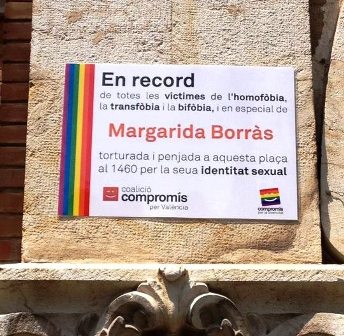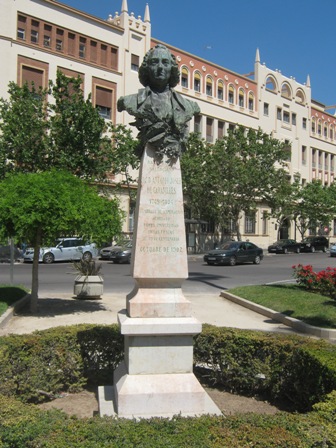Watch out Rioja: Castellón Wines are here!
Small scale quality wine production in Castellón is undergoing a Renaissance which could threaten the hegemony of La Rioja and Ribera del Duero.
When the Spanish economy was booming in the last half of the twentieth century, younger generations moved away from the farms that their parents and grandparents had worked on and looked for modern jobs in the city.
Vicente Flors’ eight hectares in the Pla de Useres in Castellón province have been in his family for six generations, and after a career working in Banco de Sabadell, he decided that it was time to get back to his family roots and rediscover the vines of his ancestors, participating in the regeneration of wine production in an area that used to produce more of the divine liquid of the vine than La Rioja and, according to Vicente, was devastated by the Spanish Civil War, when the tanks used his family’s fields for their manouevres.
 Today Vicente’s land is producing about 20,000 bottles a year of high quality wines, although, as he points out, he makes the wines essentially for himself and his friends primarily, as part of a personal search for perfection after a long and challenging apprenticeship as a pensioner since 2006.
Today Vicente’s land is producing about 20,000 bottles a year of high quality wines, although, as he points out, he makes the wines essentially for himself and his friends primarily, as part of a personal search for perfection after a long and challenging apprenticeship as a pensioner since 2006.
His vines are Tempranillo, Monastrell and Garnarcha, which at first sight seem to be untended, competing with the grass for a space to grow, until you know that this is part of Vicente’s strategy; to create wines based upon ecological principles and traditional methods.
But it didn’t come easy at first. Surrounded by wine making books he started creating wines that didn’t measure up to his expectations, and then found out that he’d been studying books translated from French and inappropriate to his circumstances; and so he started asking the older farmers in the area how the vines had been cultivated and looked after before the 70s, when most of the vines on his land had given way to almonds, olives and carobs.
As he started to make progress he decided to go back to school, to do a Masters at the Eonology School of Requena, from where he graduated in 2009 from a course run by the United Nations Educational, Scientific and Cultural Organization and the International Social Science Council.
His land, ideally suited for vine growing on sandy soil, situated between the snowy peaks of Penyagolosa and the Mediterranean Sea, soon started producing a series of wines which caught the attention of experts at local wines fairs, and Vicente now organises visits and tastings (the one scheduled by the Morella Hostelry School for the day we were there had to be cancelled because the road was blocked by snow). In April!
The reconstructed building, the old family home, now contains all the old artifacts used traditionally in the wine making process, and Vicente tries, in as far as it is possible, to continue working in the traditional way, without pesticides, coherent with the philosophy of natural, sustainable agriculture, although he draws a line at treading the grapes with his feet. Something for which we are all grateful!
He personally carries out each stage of the process, and only needs some help to harvest the grapes and some advice from an expert in Onteniente, ensuring that they go from the vines to the deposits within an hour, so that the aroma and colour are conserved.
His daughters also help out with the inevitable paperwork although he is determined that his wine growing should remain small scale and in line with his own concept of enjoying himself above all else. Having said that, Vicente nevertheless wouldn’t mind exporting some excess bottles, about 5,000 would do, and has in fact sold a pallet to Switzerland already, and received interested noises from as faraway as Belgium, UK (where he’s having talks with a distributor) and Denmark, and even the USA, China, Japan and Thailand, due to his participation in wine fairs.
So far he’s only produced red wine, although now he’s contemplating a rosé and an adventurous sweet, natural red.
But Vicente is only one of a number of wine makers from around Castellón who are, each in their own way, developing wines of surprising good quality, with plans to organise their own wine fairs and receive their own denomination of origin.
As part of this idea, they’ve already produced a wine route including 15 locations including producers, hotels and restaurants, and in June 2013, the six wine producers in the area, a short drive from Valencia on the toll-free mortorway, organised their first group event to display their wines to the public.












Recent Comments